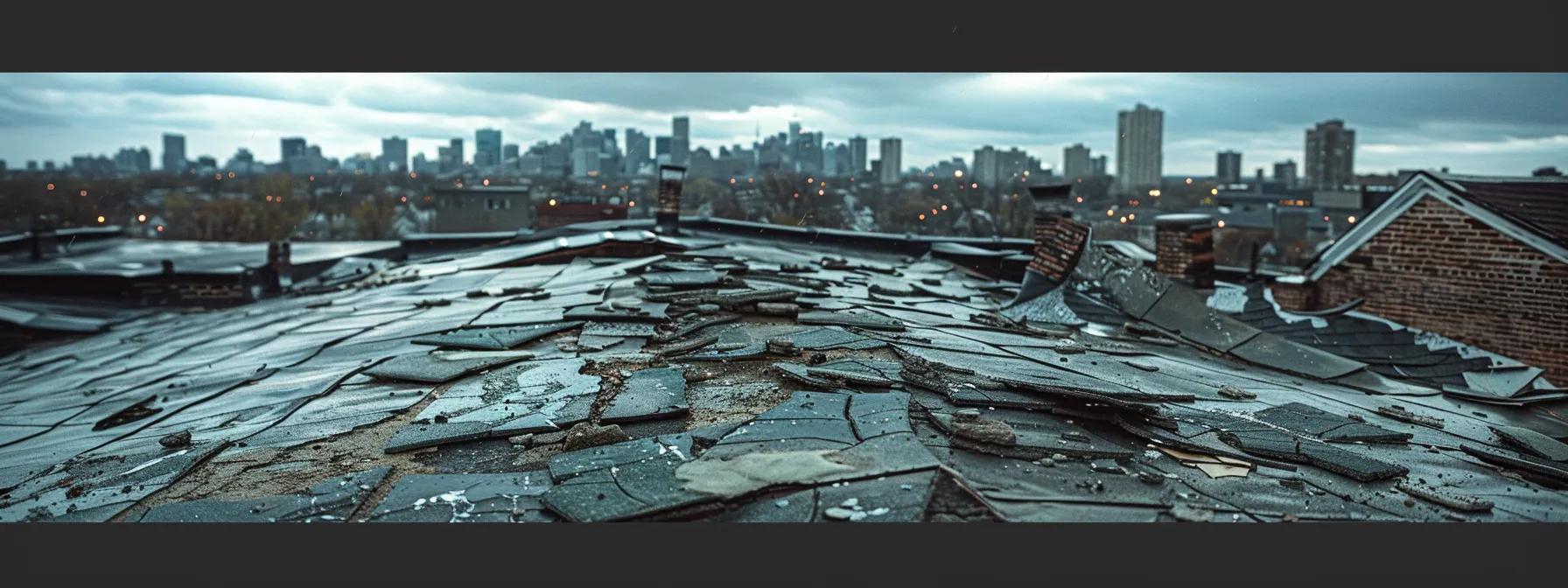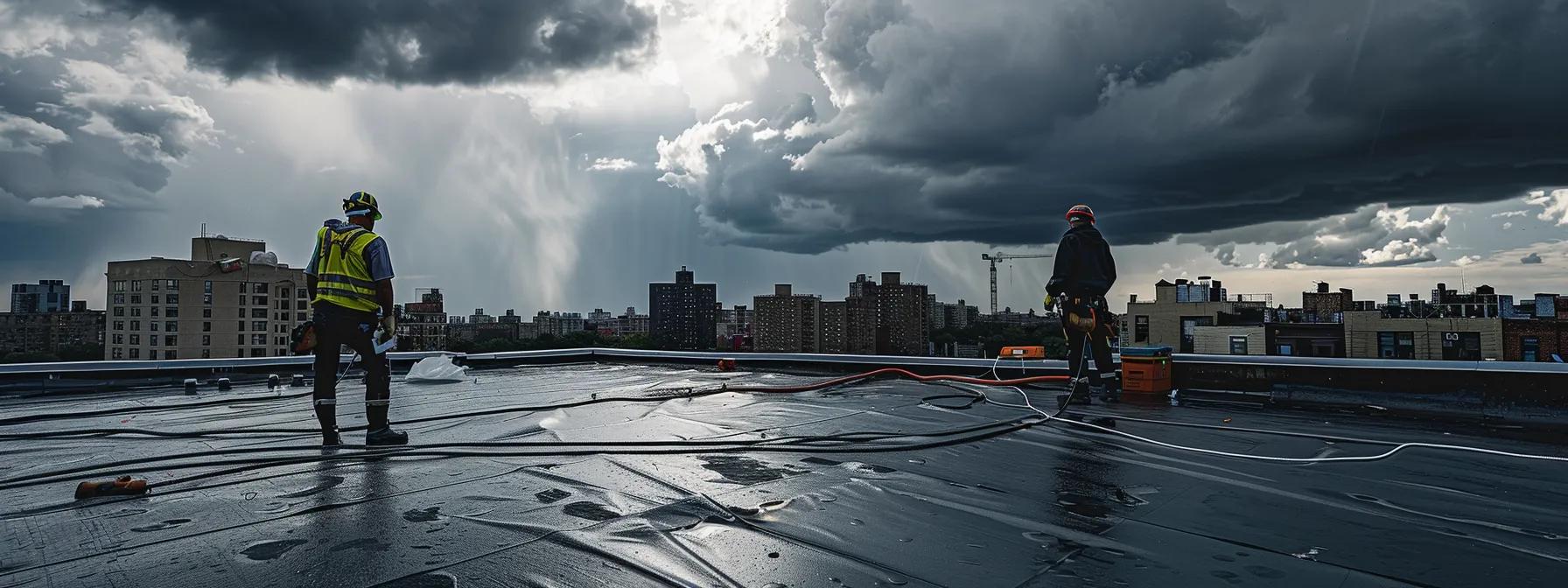
The roof is one of the most critical components of every home, protecting occupants and valuables from harsh weather and potential water damage. Over time and due to extreme conditions, roofs can show signs of wear that require urgent attention. Homeowners in Eastern Pennsylvania—especially in Montgomery, Bucks, Delaware, and Chester counties—must recognize these warning signals before minor issues turn into costly repairs or compromise the home’s structural integrity. This article outlines common signs of roof damage, their causes, steps to take upon discovery, repair options, cost factors, and prevention strategies. By understanding these aspects and arranging for immediate emergency repair, homeowners can ensure the roof’s safety, longevity, and protect their property.
Homeowners should be alert to subtle signals indicating roof problems. Early recognition helps prevent further deterioration that could lead to expensive repairs or even structural collapse.
Roof leaks often start as unexplained damp spots in the attic or on the ceiling. Dark, water-stained patches or small droplets during rain can indicate minor malfunctions like cracked shingles or compromised flashing. Early leak detection prevents water seepage, mold growth, and wood rot.
Missing, curled, or cracked shingles compromise the roof’s primary defense against weather elements. Discolored or brittle shingles can result from prolonged UV exposure or weather damage. Regular inspections after severe weather help identify shingle damage before moisture infiltrates the roof’s structure.
A sagging roof indicates significant structural issues. It may result from deteriorated roofing materials unable to support the roof’s weight or weakened supports due to water damage or pests. Immediate professional evaluation is necessary to avoid collapse and costly repairs.
Water stains, often brownish or yellowish patches on ceilings and walls, suggest water infiltration from the roof. Accompanied by peeling paint or mold growth, these stains signal ongoing leaks that require prompt repair to avoid interior damage.
Flashing around chimneys, skylights, and vents is essential for preventing water intrusion. Rust spots, crevices, or peeling on flashing indicate potential breaches where water can bypass shingles. Visual checks, especially after storms, can reveal areas needing urgent repair.

Understanding the causes of roof damage helps homeowners mitigate risks and extend the roof’s lifespan. Key factors include weather events, material wear, installation errors, and maintenance lapses.
Severe weather—including storms, heavy rain, hail, and strong winds—can cause immediate roof damage. Storms may dislodge shingles and break gutters, while hail can chip shingle surfaces and create puncture holes. In Eastern Pennsylvania, varying storm intensity directly relates to the severity of the damage, necessitating prompt repairs.
As roofs age, constant exposure to the elements causes physical deterioration. Brittle shingles, weakened underlayment, and deteriorating nails or flashing are common in older roofs. Accumulated micro-damages require timely inspections and maintenance to avoid emergencies.
Improper installation can introduce critical weaknesses in the roof structure. Similarly, neglecting routine inspections, gutter cleaning, and debris removal allows minor issues to worsen over time. Professional installation and regular upkeep are key to preventing urgent repairs.
Clogged gutters cause water pooling at the eaves, which may seep under roofing materials. In cold conditions, this water can freeze and form ice dams that damage shingles and lead to interior leaks. Regular gutter cleaning and prompt ice removal help reduce these risks.
Swift, organized action is essential when damage is identified to minimize losses and reduce repair costs.
First, assess damage from a safe distance using binoculars to look for missing shingles, sagging areas, or water stains. If damage is extensive, arrange for a professional inspection rather than risking personal safety.
Once damage is confirmed, contact a reputable emergency roofing contractor immediately. Choose professionals available 24/7 who specialize in emergency repairs. Provide clear details about the damage and any potential hazards so that they can arrange prompt stabilization and plan permanent repairs.
Temporary measures include placing tarps over damaged areas, applying sealant for small leaks, or emergency boarding if structural integrity is in question. These fixes minimize further water damage until a permanent repair can be executed.
Document the damage with photos and detailed notes. Contact your insurance provider as soon as possible and file a claim with repair estimates from reputable contractors. Keeping records of all communications and expenses will facilitate a smoother claims process.

Emergency repair methods focus on quickly restoring the roof’s integrity while planning for long-term solutions.
Emergency repair for leaks may involve applying roofing cement, sealant, or temporary patches. Replacing a few damaged shingles or reinforcing the underlayment can create a temporary waterproof barrier until a permanent fix is made.
For missing shingles, repairs typically involve removing loose material, cleaning the area, and installing matching shingles with professional-grade adhesives. This restores the roof’s barrier against moisture and protects its overall structure.
A sagging roof requires immediate intervention. Contractors may use temporary shoring or bracing to support the roof while identifying and addressing the underlying cause, whether it is water accumulation or structural degradation.
After a storm, a comprehensive assessment will look for dents, cracks, and punctures on shingles as well as damaged flashing or gutters. Repairs may include patching, replacing damaged shingles, or reinforcing the entire roof to prevent future issues.
Repair costs vary based on damage severity, materials needed, and labor requirements. Understanding these factors helps homeowners prepare for expenses.
Minor repairs like patching leaks or replacing a few shingles are relatively inexpensive. However, extensive damage involving structural components or widespread deterioration will significantly increase costs.
Quality materials such as premium shingles and robust flashing increase repair costs but offer better durability. Labor charges can be higher for emergency repairs that require rapid response and after-hours service.
Homeowner’s insurance may cover part or all of the repair costs if the damage is due to a covered event, such as a storm or hail. Filing a detailed claim with proper documentation is essential to secure a favorable settlement.
To ensure quality repairs and clear pricing, look for contractors with strong local reputations, verified licenses, and positive customer reviews. Detailed written estimates and references are useful in evaluating reliability.

Prevention through regular maintenance, inspections, and the use of quality materials can extend the roof’s lifespan and reduce emergency needs.
Routine visual inspections—ideally twice a year and after major storms—can detect loose shingles, gaps in flashing, and debris buildup. Professional inspections can uncover issues that might be overlooked and allow for timely preventive repairs.
Actions like cleaning gutters, trimming overhanging trees, and ensuring proper attic ventilation help control water flow and minimize wind damage. Regular maintenance prevents minor issues from escalating into emergencies.
High-quality materials such as architectural shingles, metal roofing, or synthetic composites offer enhanced resistance to harsh weather, including heavy winds, hail, and UV exposure. Though more expensive upfront, these materials can reduce long-term repair frequency.
Consistent maintenance—patching leaks, replacing damaged sections, and resealing vulnerable areas—not only keeps the roof watertight but also preserves its structural integrity and appearance, yielding long-term savings and reliability.
The following FAQs provide concise guidance on common concerns regarding emergency roof damage and repairs.
Early signs include sudden leaks, missing or damaged shingles, sagging sections, and water stains on nearby ceilings or walls. Immediate inspection is crucial if these signs appear after severe weather.
Repairs should ideally be initiated within 24 to 48 hours after damage is detected to prevent further water damage and structural issues, and to facilitate smoother insurance claims.
While some temporary fixes like applying roofing cement or using a tarp can be done by experienced homeowners, professional contractors are recommended for safe and effective long-term repairs.
Most homeowner’s policies cover sudden, accidental damage such as that from storms or hail, but exclude damage from neglect. Review your policy and document all damage to confirm coverage with your insurance provider.
Q: What are common signs of roof damage that require immediate repair? A: Common signs include leaks, missing or damaged shingles, sagging areas, water stains on ceilings and walls, and damaged flashing. Early detection prevents further extensive damage.
Q: How often should homeowners inspect their roofs for damage? A: It is recommended to inspect roofs at least twice a year—especially in spring and fall—and following any major storm to catch early signs of wear.
Q: What temporary measures can be taken to protect a damaged roof before professional repair? A: Homeowners can cover damaged areas with tarps, apply roofing cement to small leaks, or use temporary boarding to reduce water infiltration until repairs are made.
Q: Are emergency roof repairs more expensive than routine maintenance? A: Yes, emergency repairs generally cost more due to expedited service costs. Regular maintenance is more cost-effective and prevents costly emergency fixes.
Q: How do I choose a reliable emergency roofing contractor? A: Look for contractors with verified licenses, positive reviews, detailed written estimates, and transparent pricing. Recommendations and online research can help verify their reliability.
Q: Can insurance fully cover the cost of emergency roof repairs? A: Insurance may cover much of the repair cost if the damage is due to a covered event like a storm, though specifics vary by policy. It is important to confirm details with your provider.
Q: What should I do if I suspect mold growth after a roof leak? A: Address both roof repair and mold remediation immediately by consulting professionals specializing in roofing and mold removal to ensure all issues are properly handled.
Ignoring early signs of roof damage can lead to dangerous and costly consequences. Recognizing leaks, missing shingles, sagging areas, and water stains early allows for timely emergency repair and preventive maintenance. By engaging reliable roofing professionals and maintaining regular inspections, homeowners can protect their investment and ensure the safety and longevity of their roof.


